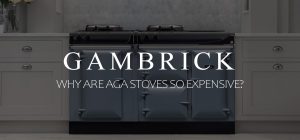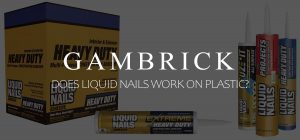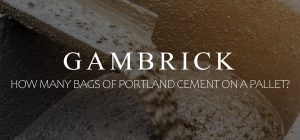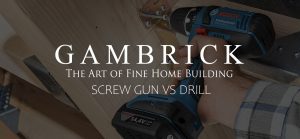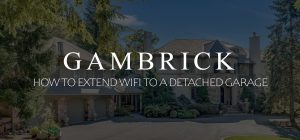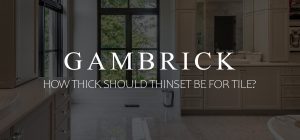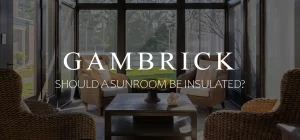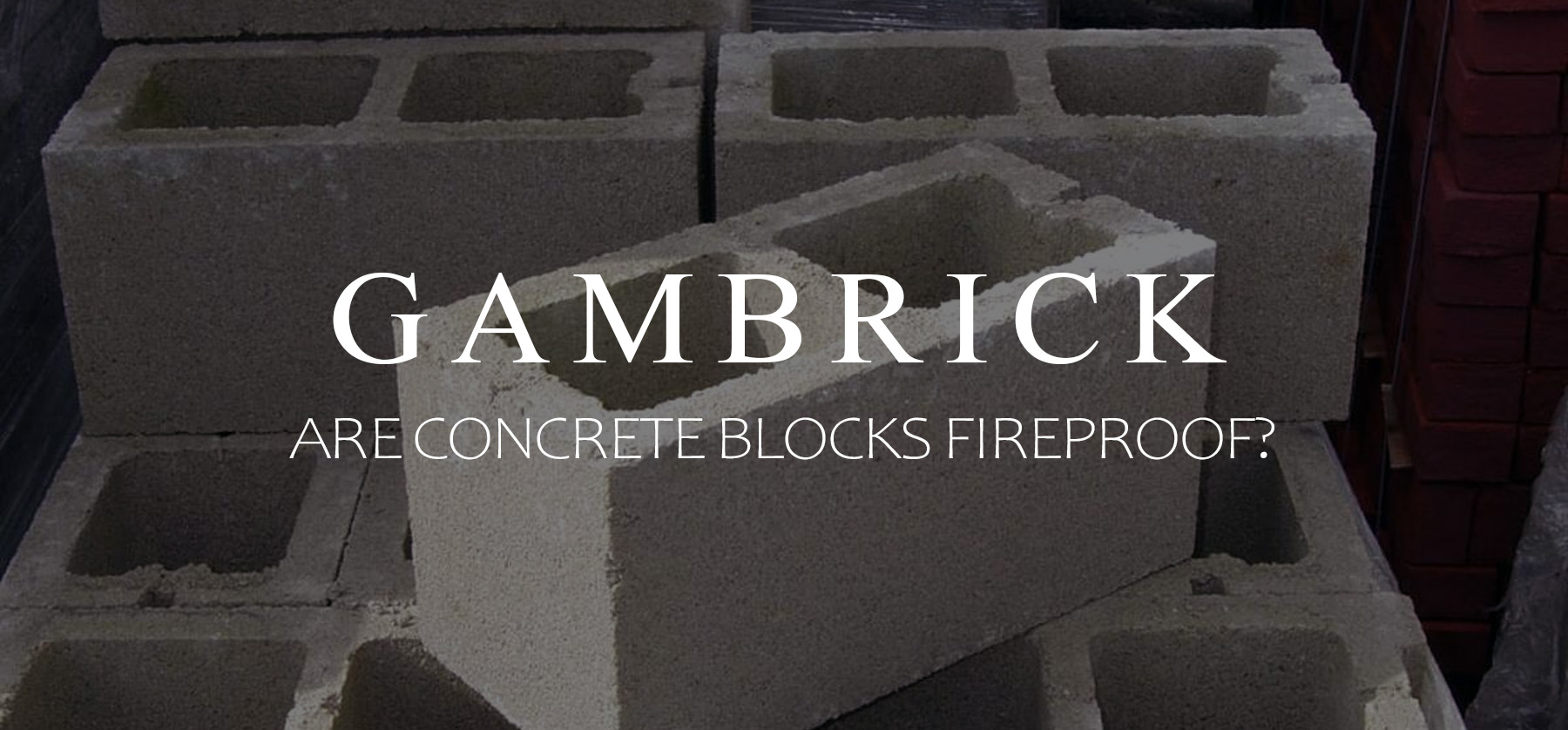
Are Concrete Blocks Fireproof?
Concrete blocks, a.k.a. cinder blocks, are a masonry product primarily used to build foundation walls and structures. They’re stacked along side and atop one another and held together by mortar. Because they don’t contain flammable materials, blocks are extremely fire resistant and don’t catch fire. However concrete blocks are not 100% fireproof. If a fire is hot enough a concrete block can fail. Under extreme heat they can crumble or even explode. But fire pits and home fires don’t usually get hot enough to damage a concrete block if you install them correctly.
Cinder blocks may contain fly ash, which is a byproduct of burning coal, and other heavy metal byproducts such as lead and arsenic which could leach into the soil. These elements add more fire resistance, but they also potentially make concrete blocks toxic.
If you spot a crack in your block, fill it with a crack filler. Cracks can weaken the block and the fireproofing they provide.
Concrete blocks are made even more fire resistant when they’re installed using refractory mortar. A special type of mortar which can resist temperature of over 2000F. Standard cement and mortar can only resist temperature of around 600°F-700°F.
I’ve been a mason and home builder for over 25 years and can tell you firsthand how important the design of a building and the materials used are for containing fires. This is why builders construct concrete block walls in between apartments in most modern buildings.
A concrete block wall acts as a fire-stop between apartments. If a fire starts in one apartment, it’s slowed and sometimes stopped by the concrete wall.
Compartmentalizing is a great way to contain a fire. Building fire-walls with concrete block along with other fire-rated materials can minimize fire damage and possibly save lives.
Concrete Block Vs Cinder Block
Although most people use the terms cinder block and concrete block interchangeably, they’re technically different things. They look similar but are made from different materials which gives them unique properties and uses.
Cinder blocks are lighter than concrete blocks because they’re made primarily from cinders instead or Portland cement.
Concrete blocks contain stone and sand aggregate but cinder blocks are made from much lighter ash.
Because of this, concrete blocks are much stronger and are generally used as a structural material in construction. Cinder blocks are weaker and are not used to build structural projects like foundation walls.
Both concrete and cinder blocks can be used to build a fire pit. However cinder blocks are a little better for the following reasons.
- Cinder blocks are a great material for small scale non-structural projects like a fire pit.
- They have more heat resistance than a standard concrete block.
- Cinder blocks are lighter making them easier to work with.
- They’re a little cheaper.
- More porous which helps vent steam, reducing the chance of damage.
- Slightly more fire resistance
If you need more strength a concrete block is better. But a fire pit doesn’t need to be that strong. You won’t be placing thousands of pounds on top of it. The additional fire resistance and ability to deal with steam makes it a little better at dealing with high heat.
Concrete block can withstand high temperatures and water pressure from fire hoses. This is another benefit to using block to build a house. When a house fire is put out, much of the house can be destroyed by water. But that’s not the case with concrete.
However, concrete blocks are porous and absorb water, so they need to dry out thoroughly if they get soaked or mold and mildew can grow.
Concrete Block Fire Walls
Concrete blocks are durable and strong with a high level of fire resistance. This makes them well suited for a range of fire protection applications.
The International Building Code (IBC) defines three wall types for fire protection
- Fire wall.
- Fire barrier.
- Fire partition
Each type provides a different level of fire protection. A fire wall is generally considered to provide the highest level of fire safety. Fire walls completely separate one area from another which helps control a fire and keep it from spreading.
Generally, fire barriers and fire partitions provide less protection in a fire. But they still help building occupants evacuate without suffering personal injury or loss of life.
Fire walls reduce the chance of a fire spreading into an adjoining space by blocking the fire. However, concrete blocks are fire resistant and not fireproof. So there is always a chance the wall could fail or the fire could find a way around it.
Concrete block fire walls are designed by the architect or engineer that designs the building and not by the builder.
Can You Use Concrete Blocks For A Fire Pit?
Concrete and cinder blocks are cheap, light weight, easy to build with and can withstand high temperatures. This makes them great for building a fire pit. But concrete blocks are not fireproof. They’re fire resistant. Combine them with heat resistant paint and/or refractory mortar for even more heat resistance.
Cinder blocks and concrete blocks both make great fire pits because they can withstand high temperatures. However they’re not 100% fire proof. This means you shouldn’t place the fire directly on top of the block. Blocks should be used to build the pit walls but the fire should resit on either dirt, stones or fire-bricks.
Concrete and cinder blocks are held together by mortar which is applied at the joints. Standard mortar or cement can only resist temperatures of around 600°F-700°F. After that it becomes brittle and prone to cracks. The closer the blocks get to the fire, the hotter they’ll become. If your blocks are close enough to the fire to exceed 600°F-700°F you should use hydraulic refractory mortar. It can resist temperatures over 2000°F.
Most standard size 36″ fire pits are fine with regular mortar.
You can also apply hydraulic refractory mortar as a thin parge coat over the blocks. This provides even more heat resistance.
Porous cinder blocks are great for for fire pits because they can vent steam. This reduces the chance of damage due to internal pressure. Cinder blocks will absorb water. As the water heats up it becomes steam. This creates a lot of pressure inside the block. If it doesn’t have a place to release the blocks could cracks.
Use fire-rated cinder blocks which absorbs heat. They’ll be protected against damaged caused from sparks and embers. And for even more surface protection apply a heat resistant masonry paint or a hydraulic mortar parge coat.
What’s The Best Block To Build A Fire Pit?
A fire pit can be a great addition to your outdoor living space. They’re a great place to gather at night and get warm when it’s colder. But they should be built safely and out of the correct materials.
Any concrete block can be used to build a fire pit. Concrete is a naturally fire resistant material that can handle high amounts of heat. But cinder blocks are a little better.
Cinder blocks have an advantage over standard concrete blocks because they’re porous. This means they can evaporate water and steam better than concrete.
All concrete absorbs water because it’s porous. When that water gets hot it turns to steam which causes pressure inside the block. Cinder blocks are more porous than concrete so it’s easier for the steam to release from the block. Concrete is less porous so steam has a harder time getting out. This can result in cracks.
As a very durable, weather-resistant, inexpensive material, concrete blocks are a great material for building a fire pit. But both concrete and cinder blocks have their pros & cons.
- Concrete Blocks: Very strong, durable and weather resistant with good heat resistance. They can support more weight that a cinder block.
- Cinder Blocks: Strong, durable and weather resistant with slightly more heat resistance than a concrete block. However they’re not a structural block. Slightly cheaper.
When I build a block fire pit I almost always use cinder blocks. There’s no real advantage to using concrete blocks because I don’t build anything on top of a fire pit. However even slightly more heat resistance is helpful.
How Many Cinder Blocks Does It Take To Build A Fire Pit?
The average fire pit is between 36 and 44 inches measured at the inside diameter. This assumes the pit is either round or square which are the best shapes.
The average fire pit is about 12-24 inches tall which is about 2 blocks high. A standard concrete block is 8 inches tall, 16 inches long and 4, 6, 8, 10 or 12 inches wide. I use either 8 or 12 inch blocks to build my fire pits.
Concrete blocks also come in 4″ heights. You can use these to make a variety of heights. Or you could bury the first block course partially underground.
I generally bury the first course under ground on a gravel base. But you can also stack the blocks right on top of earth.
- A 36″ square fire pit that’s 16″ tall built on top of the ground requires just 16 12″ blocks.
- If you bury the first course underground you need 24 blocks.
- The same 36″ fire pit that’s 16″ tall out of 8″ blocks still requires just 16 blocks.
- If you bury the first course underground you need 24 blocks.
I don’t recommend building a fire pit much bigger than 44 inches inside. A bigger inside diameter means a bigger potential fire. The fire inside the pit should be similar to a small camp fire not a bon fire.
I also don’t recommend building much higher than 24 inches. Building too high negates some of the benefits of the fire.
If you build a pit too large it puts you further away from the fire which makes it harder to feel the heat. You want a pit with a small fire that you can feel which is why 36 to 44 inches inside diameter work so well.
How To Build A Cheap DIY Concrete Block Fire Pit
Building your own 36″ fire pit out of concrete or cinder blocks is easy and cheap to do. You can buy everything you need at any Home Depot or Lowes. Building the pit can be finished in about an hour.
- Buy 16 8″ x 8″ x 16″ or 12″ x 8″ x 16″ cinder or concrete blocks which are both standard sizes. Also buy 8 caps the same width as the blocks you bought.
- Measure out a 5’x5′ space for the fire pit in your yard. Use a measuring tape and four stakes or paint to mark the corners.
- Level the ground inside this area using a shovel or hoe. This creates a flat space for the blocks to rest on and the fire.
- Once the area is flat lay down your first brick at a corner. Make sure this brick is perfectly level using a level.
- Lay your next block making sure it’s level with the first.
- Butt the blocks next to one another. You can use some masonry adhesive to hold them together if you choose.
- Check periodically to make sure the blocks are laid in a square. It’s easy to run off and create an odd shape.
- Once the perimeter is done start the next course. Stack blocks on top the first row. Make sure to stagger the joints and use adhesive to make the pit stronger.
- Finally install the caps. Use adhesive to secure the caps.
- Clean up loose dirt along the perimeter and inside of the pit.
If you have to cut block it’s easy. Buy a masonry blade and use a regular circular saw or angle grinder.
The total cost to build a simple DIY fire pit like this is around $60 for block and adhesive.
How To Build A Strong Cinder Block Fire Pit
If you want to build a strong fire pit out of concrete blocks the steps are very similar to the DIY version. However you need to use mortar or cement to bond the bricks together and a footing.
A strong cinder block fire pit should rest on a gravel footing. I usually dig down about 8-10 inches and pour 4-6 inches of gravel. Then I compact the gravel.
Once the gravel is done I lay down my first cinder block starting in a corner. Place the block right on the gravel and level it.
Now it’s time to lay the 2nd block. The difference between this method and the DIY simple build is we use mortar or cement to bond the bricks together. Butter some mortar onto the side of 2nd brick using a trowel. Then push it next the the first brick. Mortar joins should be about 1/2 inch. Use the trowel to clean off excess mortar.
Make sure both the first and 2nd blocks are level. Then install the 3rd block in the same way and so on. Butter and lay blocks, checking for level as you go.
Check periodically for square. It’s easy to create an odd shape if your not careful.
Once the perimeter is done it’s time to start stacking blocks. Butter the bottom of your first block and lay it onto the 1st course. Tap the block until it’s level. Joints should be about 1/2 inch. Clean off excess mortar.
Install blocks until the 2nd row is done and then mortar in place the cap blocks.
This method creates a stronger fire pit wall while the gravel provides drainage.
What Mortar Should I Use To Build A Fire Pit?
Remember, cinder and concrete blocks are not fireproof. They’re fire resistant. They can generally handle heat in the 600°F-700°F range. After that they can crumble in high heat. Standard mortar and cement provides about the same level of heat resistance. But hydraulic refractory mortar is much better.
Hydraulic refractory mortar is a special type of mortar which can handle heat over 2000°F. You can use it in a fire pit as a mortar to hold together blocks and as a parge coat.
The farther away the blocks are from the fire the less heat they’ll feel. In a standard 36″ inside diameter fire pit refractory mortar isn’t generally needed. However if you build a smaller pit or build bigger fire the walls may be exposed to high heat. In this case refractory mortar may be a good idea.
Fire Resistant Concrete Block Paint
Painting the concrete or cinder block walls of your fire pit with fire resistant masonry paint increases it’s fire-proofing. Remember, concrete blocks are not fireproof. They’re fire-resistant. Painting them with the right paint can increase that resistance.
The paint comes in a variety of colors so you not only add more heat-resistance but also a nice look.
Painting block isn’t exactly the same as a wall in your house, wood or other smooth surfaces. It’s a rough surface that’s not totally flat so there are some different things you need to do.
Here’s a rundown of the steps you need to take and the materials you’ll need:
- If there are damaged areas, cracks or holes, fill them in with mortar or cement prior to painting.
- Clean the cinder blocks thoroughly. Any dust or dirt on the bricks will prevent the paint from sticking properly.
- Use a medium strength wire brush on the surface of the block to remove stuck on dirt.
- Apply some bleach with a tough sponge to remove mildew.
- Use trisodium phosphate to get rid of efflorescence.
- Once you’re done cleaning rinse the blocks with water and a mild soap. Then let them dry.
- Apply a latex primer coat.
- Paint the blocks with a good-quality acrylic latex masonry paint with fire-resistance.
When priming and painting, use a textured roller that’s thick enough to cover an uneven surface or a sprayer. For small areas I use a cheap brush. I don’t recommend using a high quality expensive brush because the blocks rough surface will destroy it.
I don’t recommend painting anywhere but the inside of the pit. The top and exterior should be left bare concrete to allow normal evaporation and steam to escape the blocks.
Summary: Are Concrete Blocks Fireproof?
Concrete blocks, a.k.a. cinder blocks, are a masonry product primarily used to build foundation walls and structures. They’re stacked along side and atop one another and held together by mortar. Because they don’t contain flammable materials, blocks are extremely fire resistant and don’t catch fire. However concrete blocks are not 100% fireproof. If a fire is hot enough a concrete block can fail. Under extreme heat they can crumble or even explode. But fire pits and home fires don’t usually get hot enough to damage a concrete block if you install them correctly.
Cinder blocks may contain fly ash, which is a byproduct of burning coal, and other heavy metal byproducts such as lead and arsenic which could leach into the soil. These elements add more fire resistance, but they also potentially make concrete blocks toxic.
Concrete blocks are made even more fire resistant when they’re installed using refractory mortar. A special type of mortar which can resist temperature of over 2000F. Standard cement and mortar can only resist temperature of around 600°F-700°F.
I’ve been a mason and home builder for over 25 years and can tell you firsthand how important the design of a building and the materials used are for containing fires. This is why builders construct concrete block walls in between apartments in most modern buildings.
A concrete block wall acts as a fire-stop between apartments. If a fire starts in one apartment, it’s slowed and sometimes stopped by the concrete wall.
Compartmentalizing is a great way to contain a fire. Building fire-walls with concrete block along with other fire-rated materials can minimize fire damage and possibly save lives.
If you have any questions about concrete or cinder blocks email or leave a comment below.

John Mazzuca | About | More Posts |
Custom Home Builder
John Mazzuca is a custom home designer and builder at Gambrick with over 25 years experience in the construction industry. John has designed, built and/or remodeled hundreds of homes, small buildings, and commercial projects. He writes about business, real estate, home building, and household electronics. His work has been featured in Fox Business, Better Homes & Garden, House Beautiful, and more.


